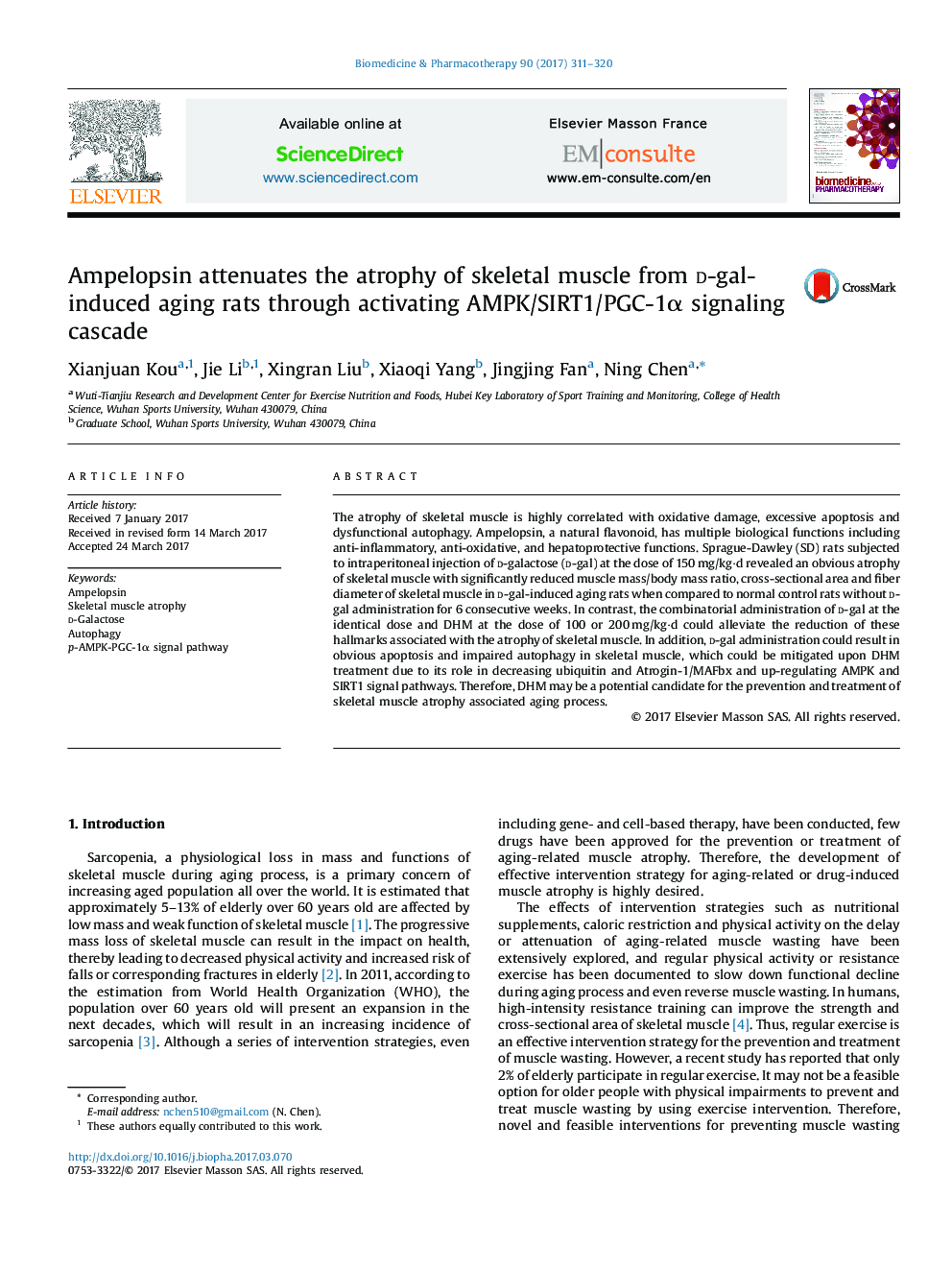| کد مقاله | کد نشریه | سال انتشار | مقاله انگلیسی | نسخه تمام متن |
|---|---|---|---|---|
| 5553047 | 1557952 | 2017 | 10 صفحه PDF | دانلود رایگان |

- d-gal can induce the atrophy of skeletal muscle associated with aging.
- DHM can alleviate the atrophy of skeletal muscle through activating autophagy.
- DHM can activate autophagy through SIRT1-mediated AMPK/PGC-1α signal pathway.
- DHM can be a potential drug candidate for the prevention and treatment of sarcopenia.
The atrophy of skeletal muscle is highly correlated with oxidative damage, excessive apoptosis and dysfunctional autophagy. Ampelopsin, a natural flavonoid, has multiple biological functions including anti-inflammatory, anti-oxidative, and hepatoprotective functions. Sprague-Dawley (SD) rats subjected to intraperitoneal injection of d-galactose (d-gal) at the dose of 150 mg/kg·d revealed an obvious atrophy of skeletal muscle with significantly reduced muscle mass/body mass ratio, cross-sectional area and fiber diameter of skeletal muscle in d-gal-induced aging rats when compared to normal control rats without d-gal administration for 6 consecutive weeks. In contrast, the combinatorial administration of d-gal at the identical dose and DHM at the dose of 100 or 200 mg/kg·d could alleviate the reduction of these hallmarks associated with the atrophy of skeletal muscle. In addition, d-gal administration could result in obvious apoptosis and impaired autophagy in skeletal muscle, which could be mitigated upon DHM treatment due to its role in decreasing ubiquitin and Atrogin-1/MAFbx and up-regulating AMPK and SIRT1 signal pathways. Therefore, DHM may be a potential candidate for the prevention and treatment of skeletal muscle atrophy associated aging process.
Journal: Biomedicine & Pharmacotherapy - Volume 90, June 2017, Pages 311-320